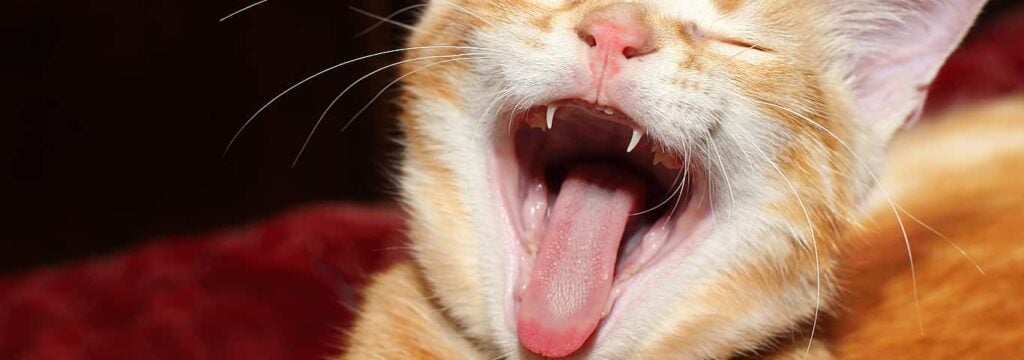Cats are an enigma that has captured people’s hearts for thousands of years. Their mysterious personalities and adorable appearances have made them hugely popular pets. But do you know what is the function of blood grooves in cat teeth?
When cats bite, their teeth have a “blood groove” that prevents suction. This allows them to pull out and bite again quickly.
Cat’s Ear Slits
The slits around a cat’s ear are completely normal. This is known as the marginal cutaneous pouch in medical terms. It is also known as Henry’s pocket. Though the precise functions of these slits are unknown, it is assumed that they function to improve hearing. (Source: Cumberland Vet Clinic)
Bald over the Cat’s Eyes
This is known as preauricular alopecia. It is normal facial hair loss that becomes more noticeable after the age of 1-2. It is also more noticeable in cats with short hair. (Source: Cumberland Vet Clinic)
Cat’s Rough Tongue
The tongue of a cat is covered with numerous small backward-facing papillae. This is why when a cat licks you, its tongue feels rough. These papillae have multiple functions. Cats, as carnivores, assist in the removal of meat from their prey. They also help a cat groom itself. Unfortunately, this is also why cats are prone to hairballs and ingesting objects like strings and thread. The papillae make it difficult for a cat to spit something out once it has something in its mouth. (Source: Cumberland Vet Clinic)
Cat’s Cracked Fangs
A cat’s long canine teeth or fangs are naturally equipped with a feature known as a blood groove. This is a typical groove along the tooth’s edge. This groove’s purpose is to allow blood to flow past the tooth as a cat bites down on its prey. Because a cat’s canine tooth is straight and round, it creates a suction effect when it bites into its prey, trapping the cat’s tooth. When a cat bites into something, the blood groove creates a suction effect. (Source: Cumberland Vet Clinic)
Cat’s Toes
On average, a cat has 18 toes, with five on each front paw and four on each hind paw. On the other hand, a cat could have many more toes. Cats with extra toes are known as polydactyls. This is a genetically inherited trait. Cats with extra toes are healthy and happy; they have more toes. Jake, a ginger tabby from Canada, holds the Guinness World Record for the cat with the most toes. Jake has 28 toes, with seven on each paw. (Source: Cumberland Vet Clinic)
Cat’s Saggy Belly
The sagging appearance of a cat’s belly is due to its “primordial pouch.” This is a common occurrence and is beneficial in protecting a cat’s abdomen. Both male and female cats exhibit this behavior. It is not caused by having a cat spayed. It’s just something that becomes more visible as your cat ages and its skin loses elasticity. (Source: Cumberland Vet Clinic)
The Politician Cat
Stubbs, an orange tabby cat, was the mayor of Talkeetna, a small town in Alaska, for 20 years! He won several uncontested elections, and despite not having any legislative power, he was popular with locals and tourists. (Source: Cumberland Vet Clinic)
Image from HillsPet
